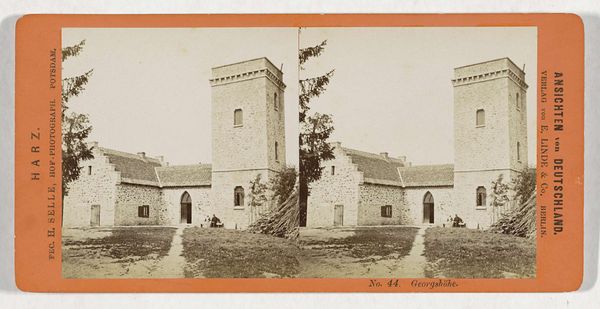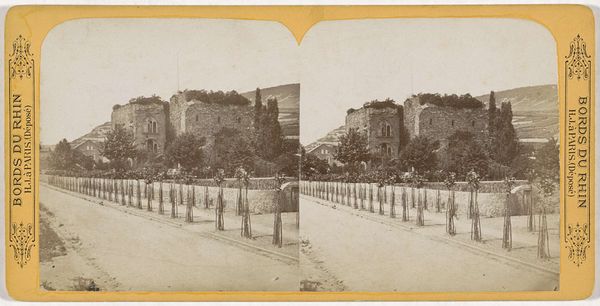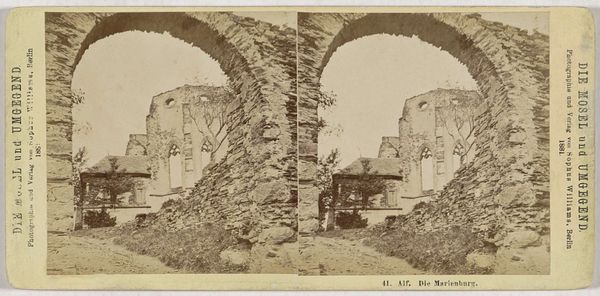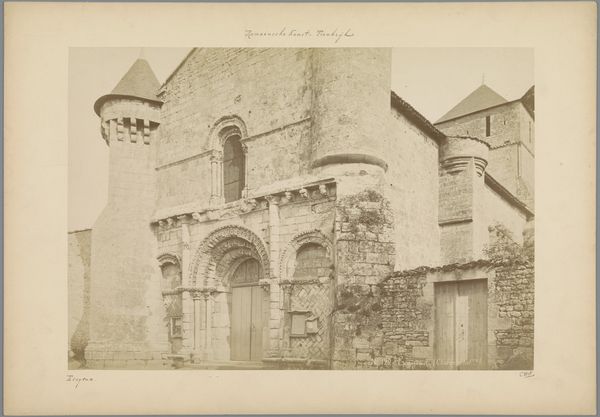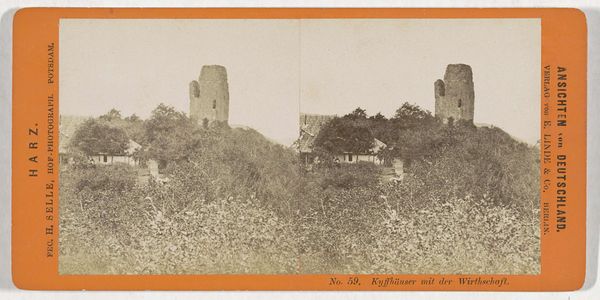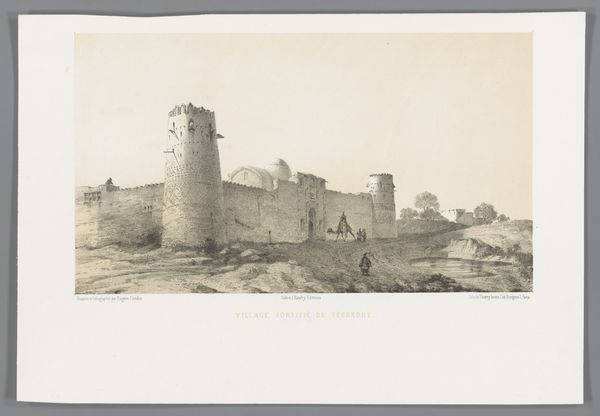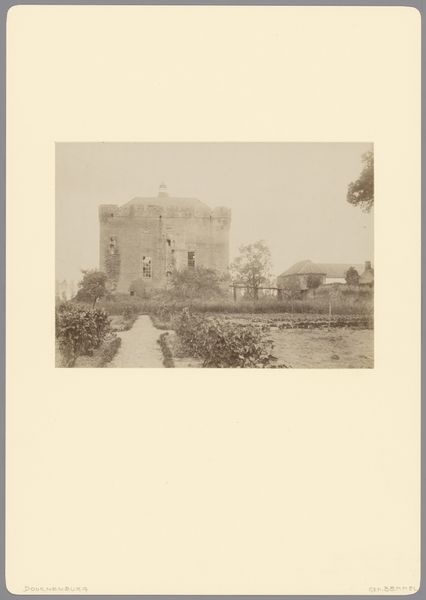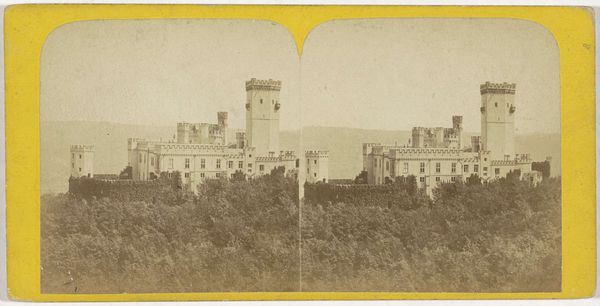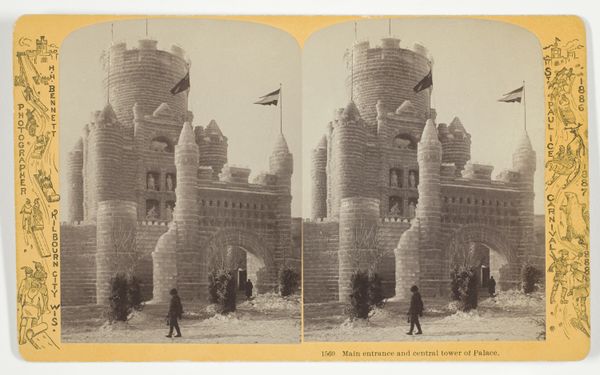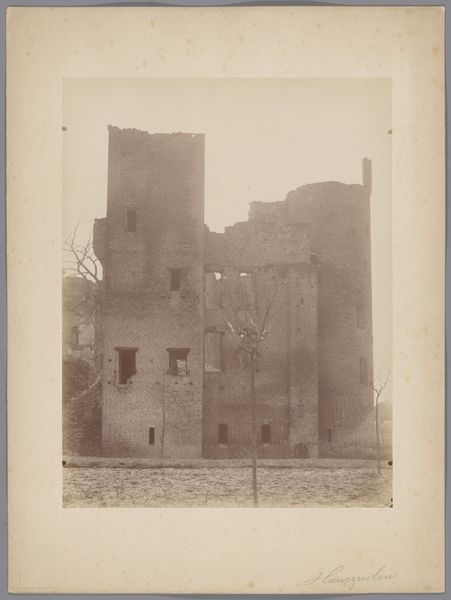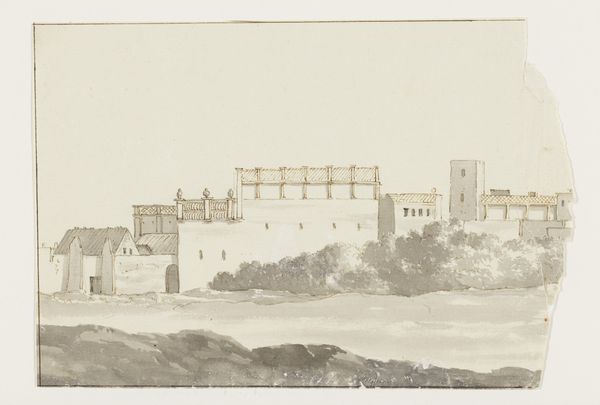
photography
#
photography
#
orientalism
#
cityscape
Dimensions: height 89 mm, width 174 mm
Copyright: Rijks Museum: Open Domain
Editor: This is a photograph from 1905, titled "David Citadel, Jerusalem," artist unknown. It seems to me to depict a stark, somewhat imposing cityscape with very rectilinear features; its muted sepia tones lend it a certain solemnity. What stands out to you when you look at this image? Curator: Indeed. The visual weight of this image stems from its insistent geometry and its tonal arrangements. Note how the strong verticals of the towers and walls, reinforced by the rigid lines of the steps, establish a dominant structure. The artist has created a rigorous interplay between light and shadow. How does that interplay sculpt and define the architectural forms within the composition? Editor: Well, I see how the shadows give depth to the stone, accentuating the textures and making the forms look almost… chiseled? It seems like the contrast highlights the severe, almost fortress-like nature of the citadel. Curator: Precisely. The shadows become integral to the narrative of the image, adding an emotive quality through their play with form. This juxtaposition generates a potent sense of spatial depth. What would you say is the key to the architectonic language here? Editor: It appears the careful arrangement of these contrasting dark and light features serves to add depth and draw attention to the structure’s impressive, almost austere form. Curator: Precisely. Consider the near absence of extraneous elements. There are so few people. Its powerful architectural vocabulary speaks volumes, does it not? What has this brief visual analysis revealed to you? Editor: It really demonstrates how much can be understood about an image solely through considering its formal components. Thanks, I see how close readings clarify how the formal elements impact a composition’s meaning.
Comments
No comments
Be the first to comment and join the conversation on the ultimate creative platform.
